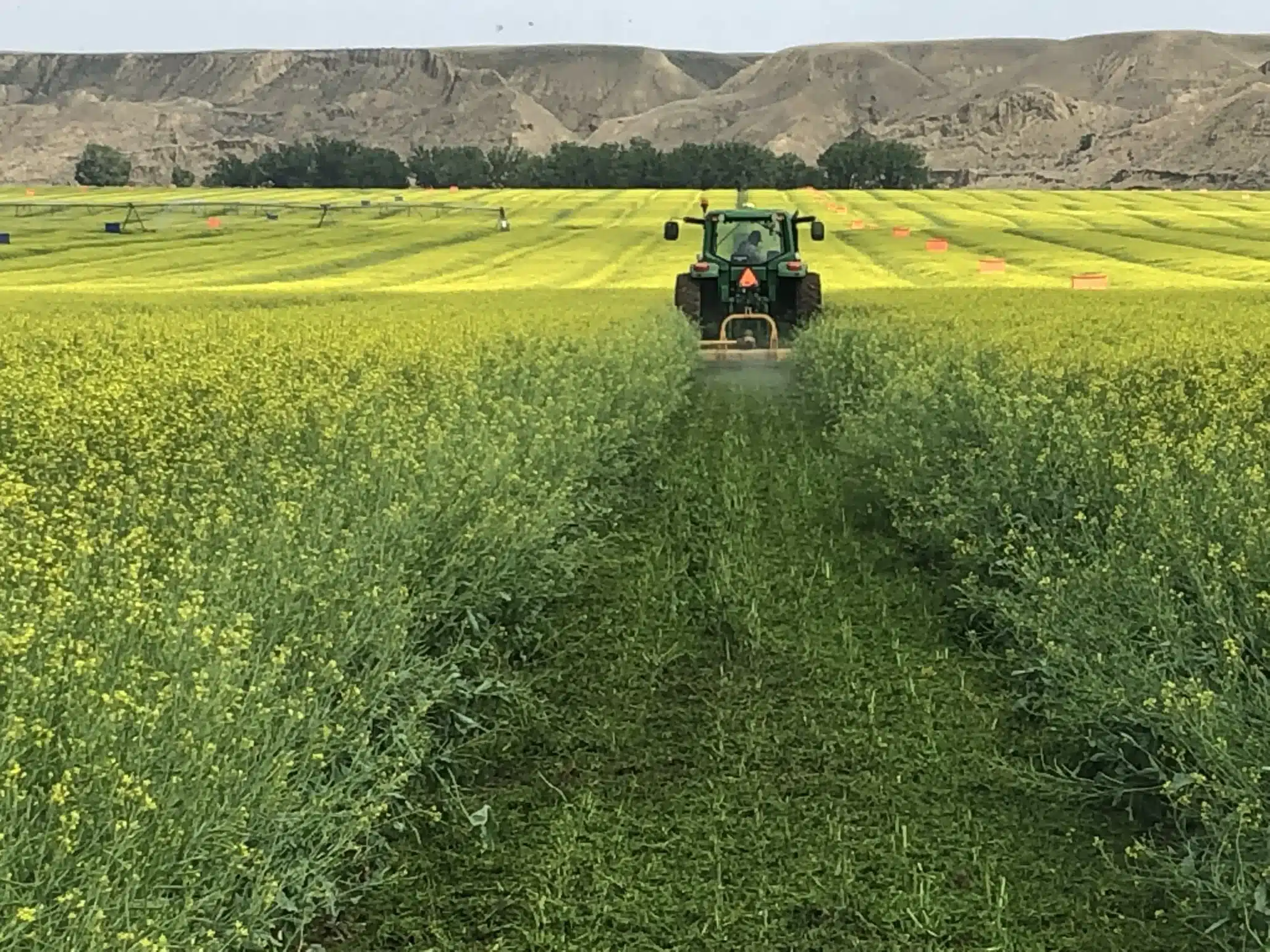Over the past three years, the global economic landscape has been marked by unprecedented levels of disruption. When it comes to risk mitigation strategies, it’s crucial to understand the scale of these disruptions.
“What was once a relatively stable environment suddenly shifted dramatically around August 2020, extending through 2023,” says Sam Taylor, farm inputs analyst for Rabobank based in New York.
Fertilizer prices surged threefold, commodity prices doubled, and glyphosate prices tripled.
This upheaval wasn’t caused by a single factor; rather, it stemmed from a multitude of events, including the Texas power crisis, COVID-related disruptions, fluctuating natural gas and coal prices, and environmental concerns.
“These factors, compounded by sanctions and conflicts, created a volatile market driven by what seems like a continuous stream of unforeseen events,” Taylor goes on to say.
Analyzing the month-over-month price changes in urea further highlights the extent of this volatility. Previously infrequent, instances where price falls exceeded gross profit margins became far more common during this period. This volatility affects not only retailers but also the entire value chain, posing challenges for independent growers like Greg Stamp, who grows and sells seed near Enchant, Alta.
“Market swings dictate our planting decisions, but anticipating these fluctuations is like reading tea leaves. One year, a particular variety may sit in our bins for an extended period, while the next, it becomes the top choice of farmers,” Stamp says.
In navigating these uncertain times, access to timely and accurate information becomes paramount. Factors such as energy pricing, political developments, and farm income trends play crucial roles in shaping market dynamics.
Understanding these factors is essential for devising effective risk mitigation strategies. This is relevant for seed growers and retailers in that not only do they use many of the inputs affected by economic forces, but their farmer customers do, too.
Examining the affordability index of fertilizers reveals a cyclicality to the volatility, with periods of peak and trough occurring roughly every 18 months, Taylor says. However, recent events have deviated from this norm, driven largely by global political dynamics and farm income trends. For instance, China’s decision to limit fertilizer exports due to domestic affordability concerns has contributed to the current unaffordability in the phosphate market.
“Looking ahead, the geopolitical landscape will continue to influence fertilizer prices, with factors like China’s export policies and Morocco’s market strategies shaping global supply and demand dynamics,” Taylor says. “While some relief may be on the horizon in the second half of the year, the immediate future remains uncertain.”
Despite challenges, the Canadian market has fared relatively well in terms of fertilizer imports. However, broader global dynamics necessitate a comprehensive understanding of the interconnectedness of markets and the importance of staying informed to navigate these turbulent times effectively.

The Cost Factor
Furthermore, retailers need to adopt a judicious approach to pricing and resource management, according to Stamp.
“Every aspect, from staff wages to freight charges, must be factored into the equation,” he says.
Moreover, Stamp highlights the pervasive impact of regulatory measures, such as carbon taxes, on the cost structure of seed retailing operations.
“The ripple effects of policies like carbon taxation permeate every facet of the supply chain, necessitating strategic adjustments to maintain profitability. Harnessing economies of scale becomes imperative in mitigating the impact of escalating costs,” Stamp says.
At present, the affordability of phosphates in the U.S. market is exceedingly high. This means there’s little room for significant arbitrage opportunities between the U.S. and Canadian markets; they’re closely aligned, according to Taylor.
“Until we witness a shift in global market conditions, particularly regarding phosphates, it’s unlikely we’ll see much relief in the Canadian market either. This scenario bears some resemblance to the factors driving the recent spike in nitrogen prices. Additionally, weather-related issues have tightened both the nitrogen and urea markets in North America.”
Looking ahead, as natural gas and coal prices decline, albeit slowly, there’s hope for some alleviation in input costs. However, the current tightness in global markets, especially in North America, persists due to the need to meet localized demand amid adjusting cost bases.
The Role of Trade

Unpredictable trade is undeniably a daunting prospect, fraught with uncertainties that can swiftly disrupt our best-laid plans. The sudden shifts in market dynamics might make some nervous as we grapple with the repercussions of rapid change, according to Stamp.
“Take, for instance, the recent surge in demand for yellow peas — an unexpected boon that momentarily revitalized the market and ignited enthusiasm among growers and buyers alike. But, such fluctuations are often temporary, leaving us dealing with uncertainy,” Stamp says.
“The spectre of non-tariff trade barriers always looms large for us. Phytosanitary concerns and maximum residue limits [MRLs] emerge as formidable obstacles, potentially wielded as tools of protectionism rather than genuine regulatory concerns. These invisible barriers pose a formidable challenge, complicating our efforts to navigate the intricacies of global trade.”
The conundrum becomes even more pronounced when considering specialized crops tailored to niche markets. A sudden influx of Russian peas into China, for instance, can swiftly alter market dynamics, prompting a re-evaluation of retailers’ strategies and priorities.
“The uncertainty surrounding market access and pricing adds another layer of complexity, leaving us to think about volume and market positioning,” Stamp adds.
Amidst these uncertainties, the ability to adapt and pivot becomes paramount. While the road ahead may include obstacles, it is through resilience and strategic foresight that retailers can navigate the tumultuous waters of international trade.
Reasons for Optimism
Looking ahead to the 2025 season, there’s optimism that input costs will level out more swiftly than in previous years, providing some respite for farmers. Despite ongoing bearish sentiments toward commodity prices, the expectation is for a more balanced cost environment in the coming seasons, Taylor says. Examining the relative affordability of nitrogen further emphasizes the urgency for cost reductions.
“Despite this, farm income continues to decline, not keeping pace with falling commodity prices. This trend has led to a weaker margin environment, with farmers anticipating significant decreases in net farm income for the upcoming seasons. This could potentially lead to demand destruction and pullbacks in investments,” Taylor says.
The energy complex plays a significant role in global market dynamics, with fluctuations in natural gas and coal prices impacting the nitrogen and pesticide sectors. However, recent trends indicate a gradual decline in production costs, offering some hope for price relief in the future.
Despite the unpredictability of the markets, Stamp extols the transformative power of new genetics and plant breeding in mitigating such market volatility. Seed emerges as one of the few inputs that can actually help farmers to be more profitable amid economic uncertainty.
“New seed varieties offer some hope amidst economic turmoil, you might say,” Stamp says, emphasizing the relationship between innovation and economic resilience.
“For example, the advent of higher-protein varieties and solid stem cultivars exemplifies the transformative potential of genetic innovation, offering farmers a competitive edge in an unpredictable market landscape.”
As Stamp and his customers grapple with the ebb and flow of economic currents, the importance of strategic planning and adaptive resilience emerges as a crucial theme.
“Harnessing the power of new genetics is not just a luxury but a necessity in an era defined by economic volatility,” Stamp adds.
Taylor agrees.
“Seeds are one of the least discretionary inputs in farming. Of course, seed isn’t just about the crop itself; it’s also a carrier of a vast array of technologies. From seed treatments to gene editing to new traits, seed serves as a conduit for innovation in agriculture,” Taylor adds. “It’s fascinating to see how seed varieties evolve, and I believe seed will remain a key vehicle for future agricultural technologies as well.”
Strategies for Success Amidst Economic Uncertainty in 2024
Gather Information: Invest in systems and processes to gather and analyze information about global market dynamics, including commodity prices, fertilizer prices, geopolitical events, and regulatory changes. This can help in making informed decisions and developing proactive strategies to mitigate risks.
Diversify Supply Sources: Explore opportunities to diversify the sources of seed and other inputs to reduce reliance on specific regions or suppliers that may be impacted by geopolitical or environmental factors. This could involve building partnerships with suppliers from different geographic regions or investing in alternative supply chains.
Mitigate Risk: Develop scenario plans to anticipate various potential disruptions and their impacts on the supply chain. This includes considering scenarios such as trade disputes, extreme weather events, regulatory changes, and shifts in consumer demand. Implement risk management strategies to mitigate the potential negative impacts of these scenarios.
Engage in Policy Advocacy: Engage with policymakers at local, national, and international levels to advocate for policies that support a stable and predictable business environment for seed retailers. This may involve participating in industry associations, lobbying efforts, and providing input into policy discussions related to agriculture and trade.
Invest in Resilience: Allocate resources towards building resilience in the supply chain, infrastructure, and operations. This could include investments in technology, infrastructure upgrades, supply chain optimization, and training programs for staff to enhance adaptability and responsiveness to changing market conditions.
Educate and Support Your Customers: Provide support and education to customers, such as farmers, about the factors influencing input prices and market dynamics. This can help them make informed decisions about crop planning, input purchasing, and risk management strategies.
Plan for the Long Term: Develop long-term strategic plans that take into account the potential impact of ongoing trends and disruptions in the global landscape. This includes evaluating opportunities for innovation, diversification, and sustainable growth while remaining adaptable to changing market conditions.












